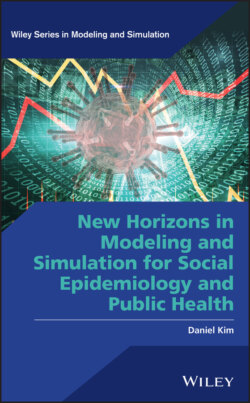Читать книгу New Horizons in Modeling and Simulation for Social Epidemiology and Public Health - Daniel Kim - Страница 30
References
Оглавление1 Auchincloss, A.H., Riolo, R.L., Brown, D.G. et al. (2011). An agent‐based model of income inequalities in diet in the context of residential segregation. American Journal of Preventive Medicine 40 (3): 303–311.
2 Bambra, C., Gibson, M., Amanda, S. et al. (2010). Tackling the wider social determinants of health and health inequalities: evidence from systematic reviews. Journal of Epidemiology and Community Health 64: 284–291.
3 Bourguignon, F. and Spadaro, A. (2006). Microsimulation as a tool for evaluating redistribution policies. The Journal of Economic Inequality 4 (1): 77–106.
4 Christakis, N.A. and Fowler, J.H. (2007). The spread of obesity in a large social network over 32 years. New England Journal of Medicine 357 (4): 370–379.
5 Economos, C.D. and Hammond, R.A. (2017). Designing effective and sustainable multifaceted interventions for obesity prevention and healthy communities. Obesity 25 (7): 1155–1156.
6 Epstein, J.M. (2008). Why model? Journal of Artificial Societies and Social Simulation 11 (4): 12.
7 Gillman, M.W. and Hammond, R.A. (2016). Precision treatment and precision prevention: integrating “below and above the skin”. JAMA Pediatrics 170 (1): 9–10.
8 Hammond, R.A. (2009). Complex systems modeling for obesity research. Preventing Chronic Disease 6 (3): A97.
9 Hammond, R.A. and Ornstein, J. (2014). A model of social influence on body weight. Annals of the New York Academy of Sciences 1331: 34–42.
10 Hernan, M.A. and Robins, J.M. (2010). Causal Inference. Boca Raton, FL: CRC.
11 Hoffer, L.D., Bobashev, G., and Morris, R.J. (2009). Researching a local heroin market as a complex adaptive system. American Journal of Community Psychology 44 (3–4): 273–286.
12 Homer, J.B. and Hirsch, G.B. (2006). System dynamics modeling for public health: background and opportunities. American Journal of Public Health 96 (3): 452–458.
13 Jones, A.P., Homer, J.B., Murphy, D.L. et al. (2006). Understanding diabetes population dynamics through simulation modeling and experimentation. American Journal of Public Health 96 (3): 488–494.
14 Kaplan, G.A., Roux, A.V.D., Simon, C.P., and Galea, S. (eds.) (2017). Growing Inequality. Westphalia Press.
15 Levy, D.T., Chaloupka, F., Gitchell, J. et al. (2002). The use of simulation models for the surveillance, justification and understanding of tobacco control policies. Health Care Management Science 5 (2): 113–120.
16 Longini, I.M., Nizam, A., Xu, S. et al. (2005). Containing pandemic influenza at the source. Science 309 (5737): 1083–1087.
17 Luke, D.A. and Stamatakis, K.A. (2012). Systems science methods in public health: dynamics, networks, and agents. Annual Review of Public Health 33: 357–376.
18 Luke, D.A., Hammond, R.A., Combs, T. et al. (2017). Tobacco town: computational modeling of policy options to reduce tobacco retailer density. American Journal of Public Health 107 (5): 740–746.
19 Mabry, P.L., Marcus, S.E., Clark, P.I. et al. (2010). Systems science: a revolution in public health policy research. American Journal of Public Health 100 (7): 1161–1163.
20 Maglio, P.P. and Mabry, P.L. (2011). Agent‐based models and systems science approaches to public health. American Journal of Preventive Medicine 40 (3): 392–394.
21 Tengs, T.O., Osgood, N.D., and Lin, T.H. (2001). Public health impact of changes in smoking behavior: results from the tobacco policy model. Medical Care 39 (10): 1131–1141.
